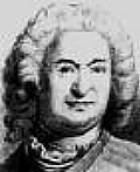Occupation Architect, inventor Name Carl Cronstedt Parents Jakob Cronstedt | Known for Swedish architect Role Architect Structures Lange Jan | |
 | ||
Born 25 April 1709 ( 1709-04-25 ) Stockholm, Sweden Died November 9, 1779, Stockholm, Sweden Spouse Margareta Lagerberg (m. 1744) Children Johan Adam Cronstedt, Fredrik Adolf Ulrik Cronstedt | ||
Carl Johan Cronstedt (1709-1779), was a Swedish architect, inventor, count, noble, civil servant, scientist and bibliophile.
Contents
Biography
Cronstedt was the son of Jakob Cronstedt (Olderman) and Margareta Beata Grundel. He was born in 1709 in Stockholm, Sweden. He married Countess Eva Margareta Lagerberg in 1744.
Cronstedt became a pupil of Christopher Polhem in 1729 and in 1733 was his apprentice. He studied civil engineering under Carl Harleman and in 1743 became his successor as superintendent. He had this post to 1767 and carried out work at the following,
Positions
Inventor
In the mid-eighteenth century Cronstedt, working together with Fabian Wrede, increased the efficiency of the wood-burning stove roughly eightfold with a new technology and invention. Their 1767 redesign of the traditional wood-burning stove directed the smoke and heated gases through long flues that wound up and down inside the stove. The stove and its flues were built of special masonry bricks that captured, and then radiated, more heat from the burning process. The new technology changed the pattern designs of large interior building space for residences and other public buildings. It allowed more rooms to be heated with the same amount of firewood. It had significant social and economical consequences throughout Sweden and later throughout Europe and America up into the twentieth century. Cronstedt's invention had significant environmental significance as well because it saved forests from excess usage.
Cronstedt showed how in a ceramic designed wood burning stove that much more additional heat could be captured in a heavily tiled system of five long internal flues. The innovation of his masonry stove system captured the heat from only periodic burning of wood. It would then spread out that heat over a longer period for a fairly constant temperature. Because of this it only needed to be lit in the mornings and in the evenings. This type of residential (or interior space) heating system is sometimes referred to as a kakelugn in a Swedish stove. In England and America it is called a "tile stove" or masonry stove. It is a type of "contra-flow stove" which the Chinese have made into a Kang bed-stove.
Books written
Cronstedt wrote and had published several books. Among these were,
